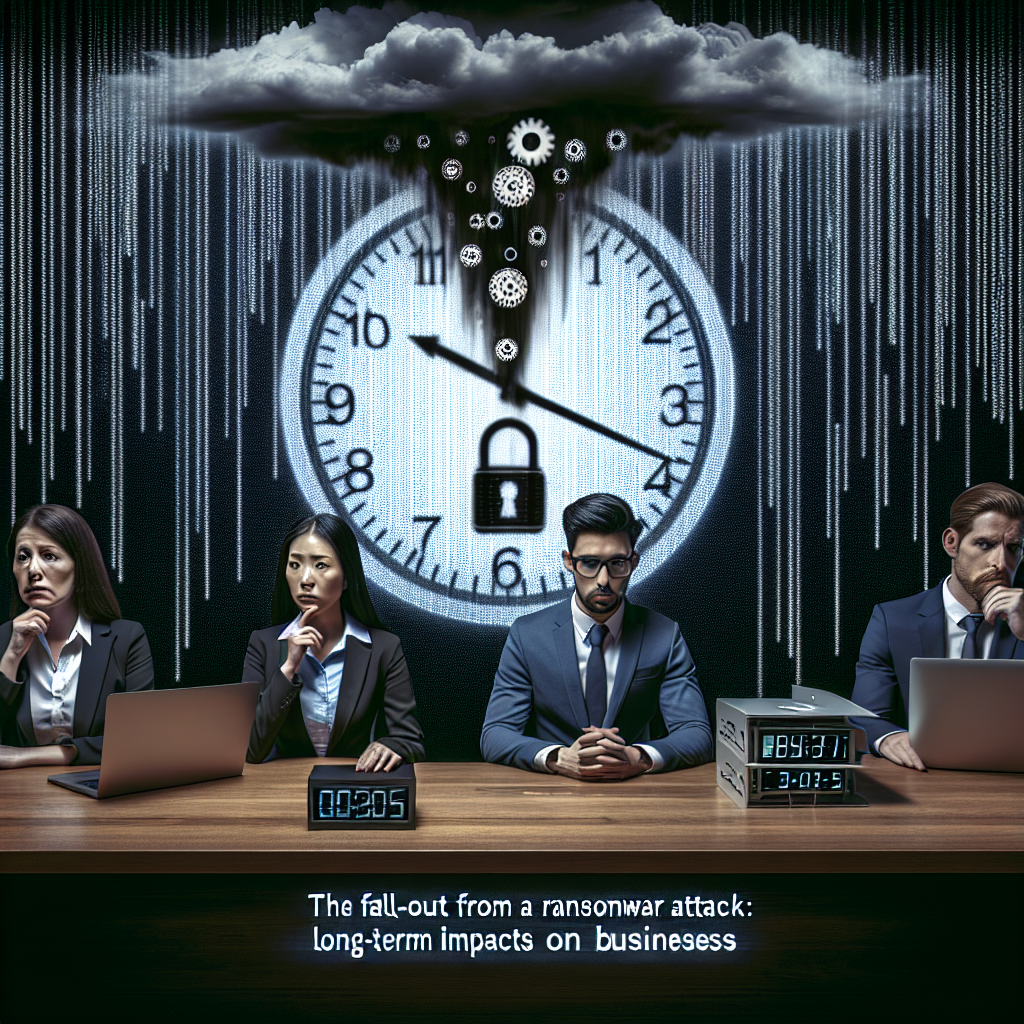The digital age has brought about numerous advantages, including enhanced connectivity, unprecedented access to information, and the development of innovative business models. However, it has also led to significant vulnerabilities, particularly in the realm of cybersecurity. One of the most alarming threats facing businesses today is ransomware — a type of malicious software that encrypts a victim’s files and demands a ransom for their release. As the frequency and sophistication of ransomware attacks continue to escalate, their long-term impacts on businesses are becoming clearer.
Understanding Ransomware Attacks
Ransomware attacks are conducted by cybercriminals who exploit weaknesses in a company’s cybersecurity infrastructure. Once they gain access to sensitive data, they lock it and demand payment—often in cryptocurrency—to restore access. While some businesses may opt to pay the ransom to quickly regain access to their data, this decision does not come without substantial risks and long-term consequences.
Immediate Consequences of Ransomware Attacks
The immediate fallout from a ransomware attack is often severe. It can lead to significant downtime, disrupting operations and causing financial losses. According to a report from cybersecurity firm Coveware, companies that fall victim to ransomware attacks can expect an average downtime of approximately three weeks. During this period, productivity plummets, and operational capabilities are severely hampered.
Additionally, ransomware attacks can destroy a company’s reputation. Customers and partners may lose trust in the business, which can result in reduced sales and loss of future contracts. For companies in regulated industries, such as healthcare, finance, and critical infrastructure, the fallout can include legal ramifications and regulatory penalties, compounding the initial impact of the attack.
Long-Term Impacts on Businesses
While the immediate consequences of ransomware attacks can be devastating, the long-term impacts can be even more significant. These include financial implications, operational challenges, reputational damage, and even changes in business strategy.
1. Financial Burden
The financial impact of a ransomware attack can extend far beyond the ransom payment itself. Companies may incur costs related to recovery efforts, such as hiring cybersecurity experts to remove malware and restore data. There may also be legal fees stemming from lawsuits initiated by affected stakeholders. According to a study by Cybersecurity Ventures, the global cost of ransomware attacks is expected to reach $265 billion by 2031, pointing to a crisis that can have enduring financial repercussions for businesses.
Additionally, organizations may face increased insurance premiums. After a ransomware attack, businesses often turn to cyber insurance policies for recovery assistance, but claims can lead to significant hikes in premiums or even difficulty obtaining coverage altogether.
2. Operational Disruption
The downtime caused by ransomware attacks leads to operational disruption that can take months or even years to fully mitigate. Companies may have to invest in upgraded IT infrastructure and cybersecurity measures to prevent future attacks, resulting in long-term capital expenditures.
Furthermore, employees often face the challenge of adapting to new systems and processes during the recovery phase, which can lead to decreased morale and productivity. Without a robust disaster recovery plan in place beforehand, organizations may struggle to re-establish their operational routine.
3. Reputational Damage
In an age of heightened awareness around data privacy and cybersecurity, the reputational damage incurred by a ransomware attack can linger for years. Consumers today are more cautious about sharing their information with companies that have experienced security breaches. This distrust can lead to customer attrition and a reluctance from potential clients to engage in business.
In many cases, companies that fall victim to ransomware attacks face increased scrutiny from industry watchdogs and may receive negative press coverage, further amplifying the reputational harm. Recovering from this damage often requires significant investment in marketing efforts to restore brand image.
4. Policy Changes and Compliance Issues
The aftermath of a ransomware attack often leads businesses to reevaluate their cybersecurity policies. Organizations may implement stricter data protection measures, invest in cybersecurity training for employees, and develop incident response plans. While these changes are necessary, they can also require time and resources that may have otherwise been allocated to growth initiatives.
Moreover, companies operating in regulated industries may face increased compliance obligations as a result of an attack. Regulatory bodies may impose more stringent requirements, resulting in additional administrative burdens for businesses already reeling from the attack.
5. Shifts in Business Strategy
In response to ransomware threats, many businesses are compelled to shift their overall strategy. Organizations may prioritize cybersecurity in their risk management frameworks, leading to adjustments in resource allocation. Furthermore, businesses might explore diversifying their offerings or investing in new technologies that enhance their security posture.
Additionally, increased awareness of ransomware threats may prompt organizations to consider cyber insurance as a critical component of their business strategy.
FAQs
Q1: What should a business do immediately after a ransomware attack?
A1: Immediately isolate affected systems to contain the infection, notify relevant stakeholders, and contact law enforcement. It’s crucial to involve cybersecurity professionals to assess the situation and help with recovery.
Q2: Are all businesses equal targets for ransomware attacks?
A2: No, while ransomware attacks can happen to any business, organizations with sensitive data, such as healthcare providers and financial institutions, are often more attractive targets due to the value of the data they handle.
Q3: Should a business pay the ransom?
A3: While paying the ransom might seem like a quick fix, it does not guarantee that you will regain access to your data. Moreover, paying can encourage further attacks and perpetuate the criminal ecosystem.
Q4: How can businesses prepare for ransomware attacks?
A4: Businesses should regularly back up their data, educate employees about phishing attacks and cybersecurity best practices, invest in strong IT security protocols, and develop a robust incident response plan.
Q5: What are the long-term effects of ransomware on employee morale?
A5: Employee morale can suffer due to anxiety about job security, increased workloads during recovery, and frustration with new systems that may be implemented as a result of the attack. Proactive communication and support can help mitigate these effects.
Conclusion
The long-term impacts of a ransomware attack can be profound and far-reaching for businesses. From financial burdens and operational challenges to reputational damage and strategic shifts, organizations must prioritize cybersecurity to protect themselves from this significant threat. As the digital landscape continues to evolve, investing in robust cybersecurity measures is critical for any business aiming for sustainability in an increasingly perilous cyber environment.


